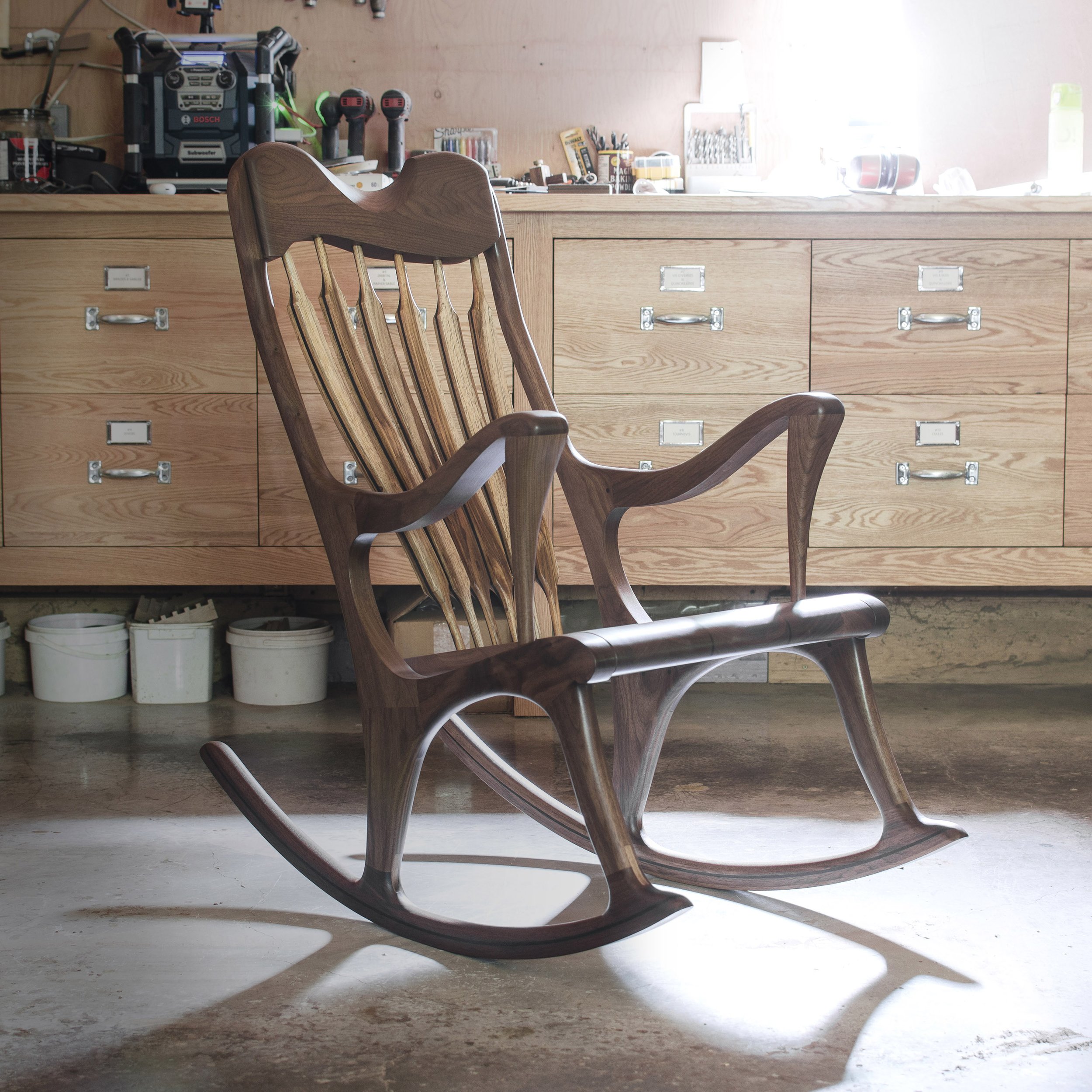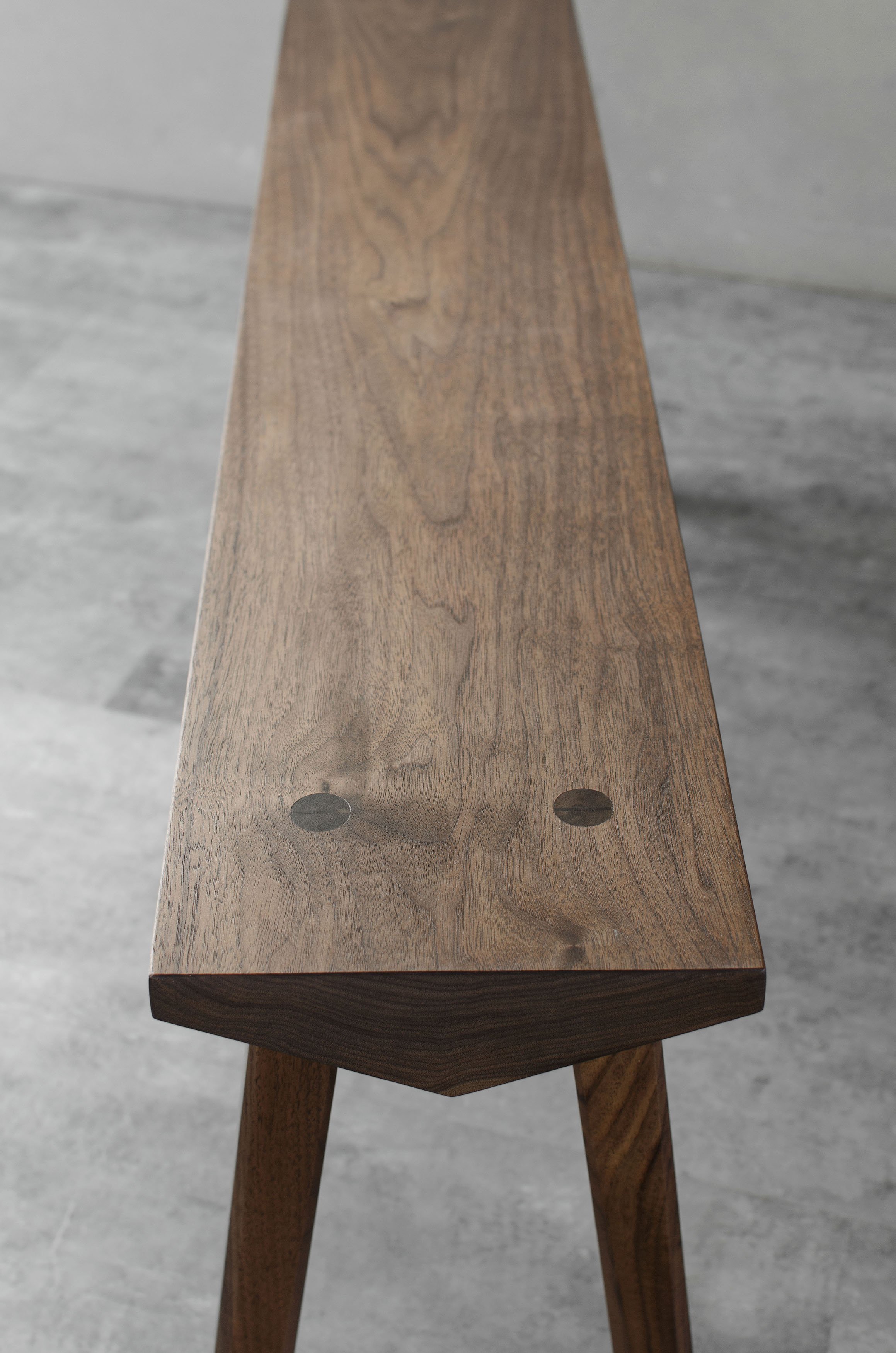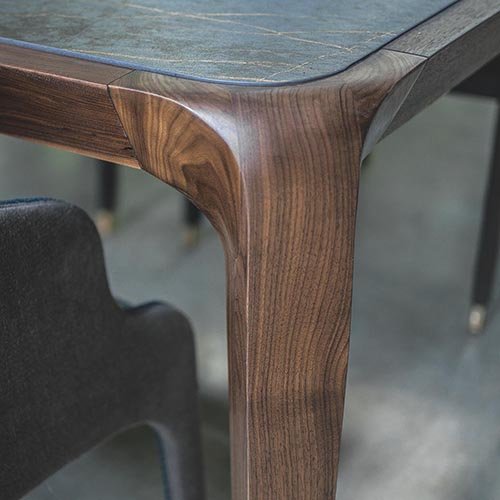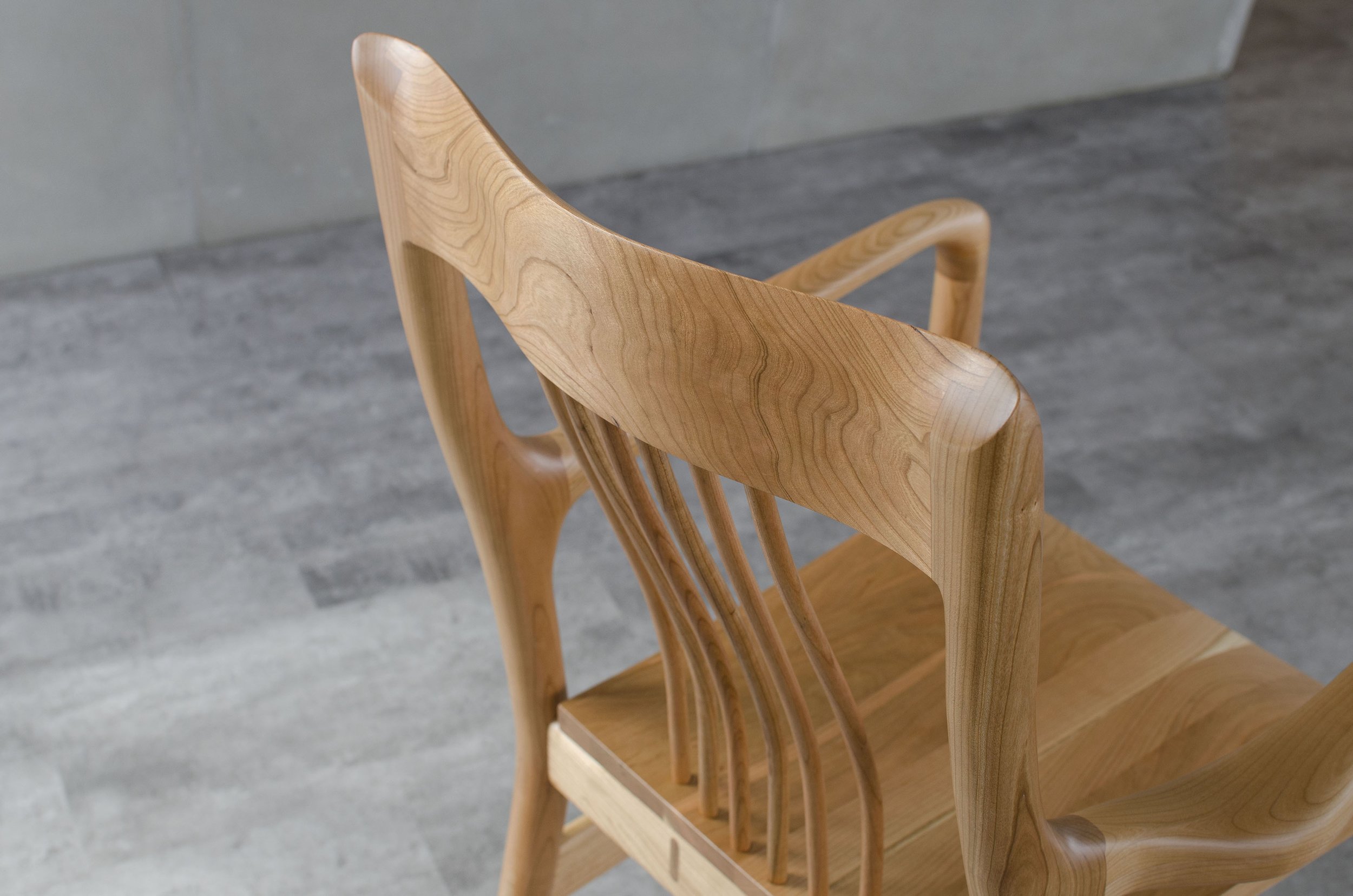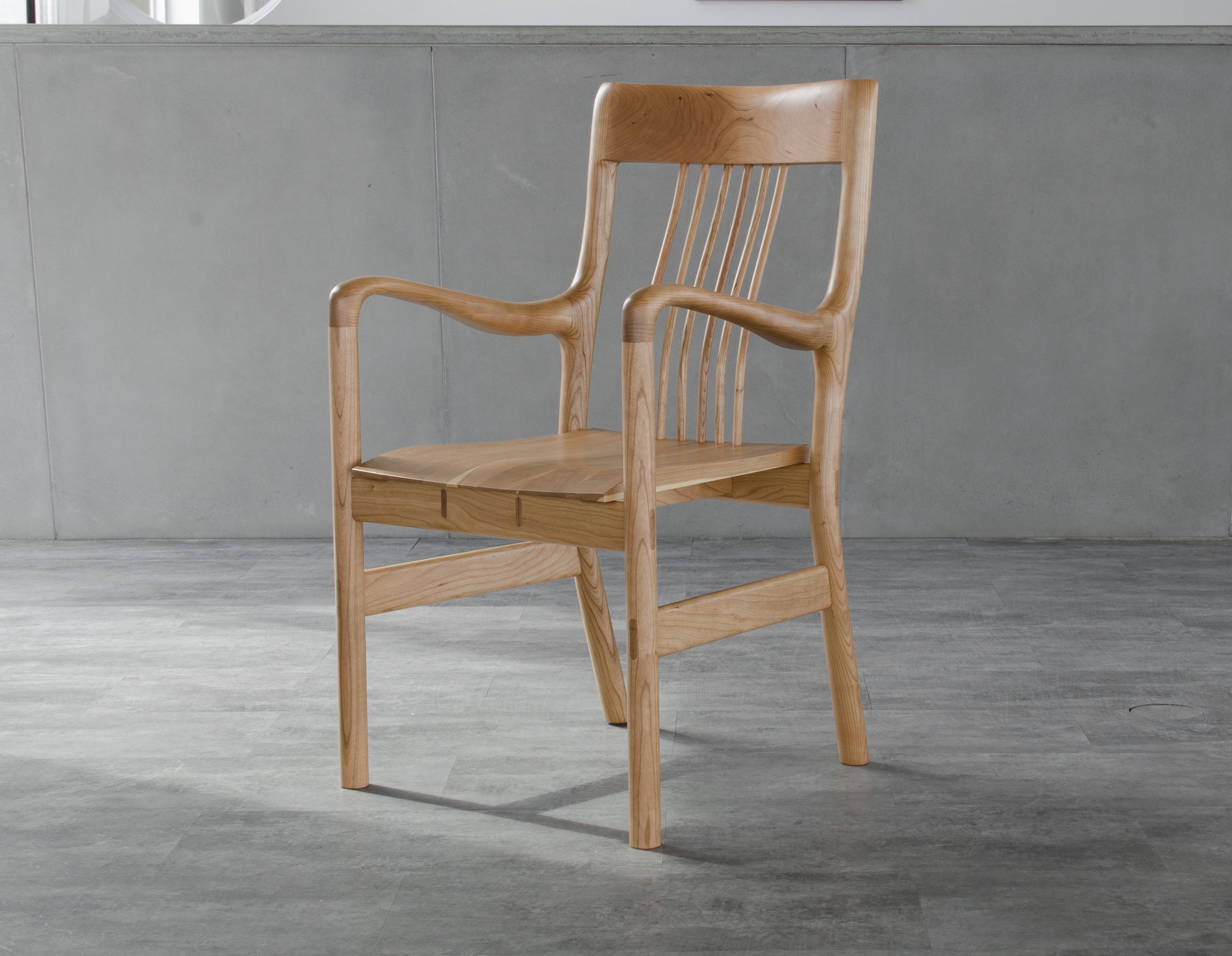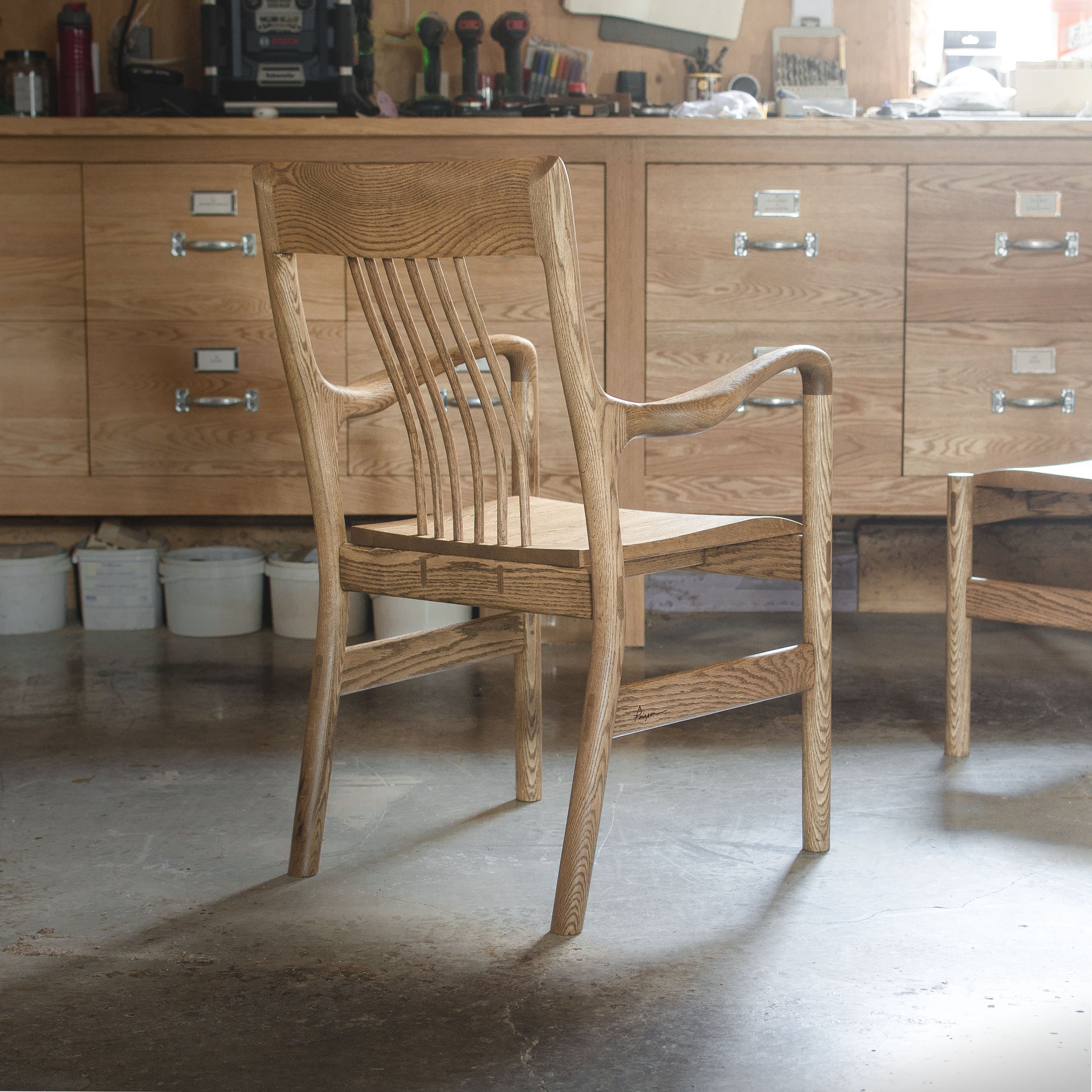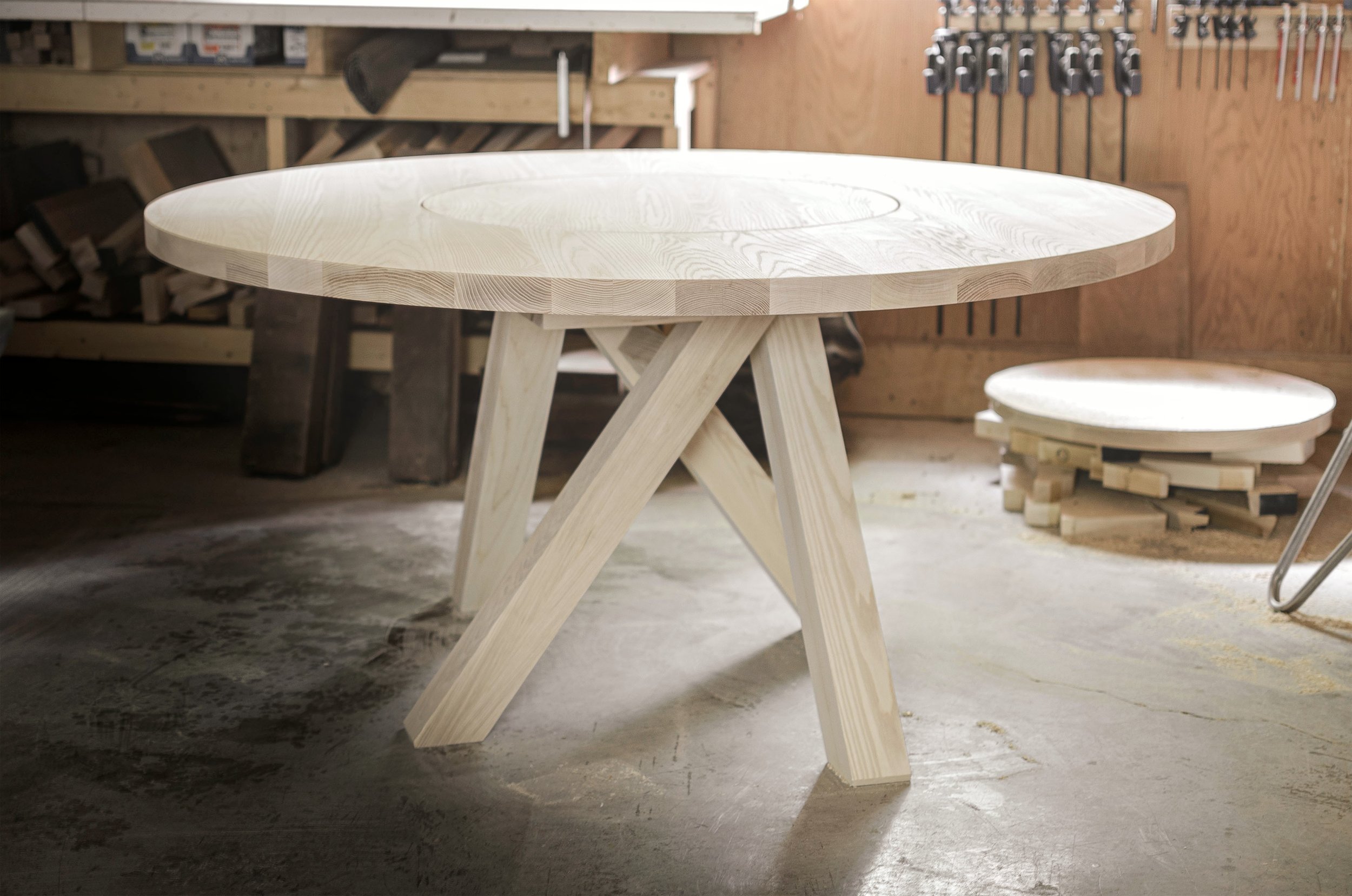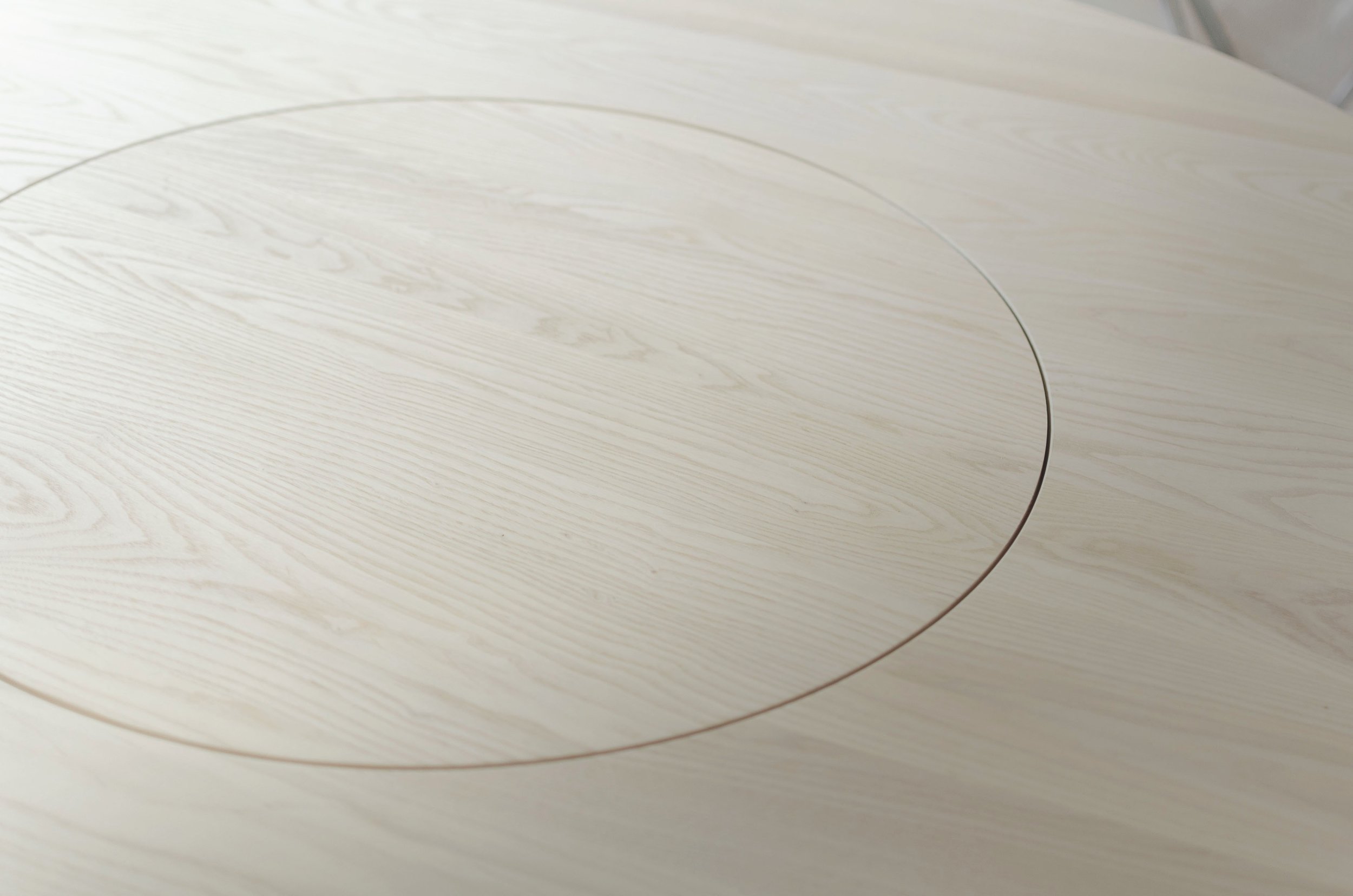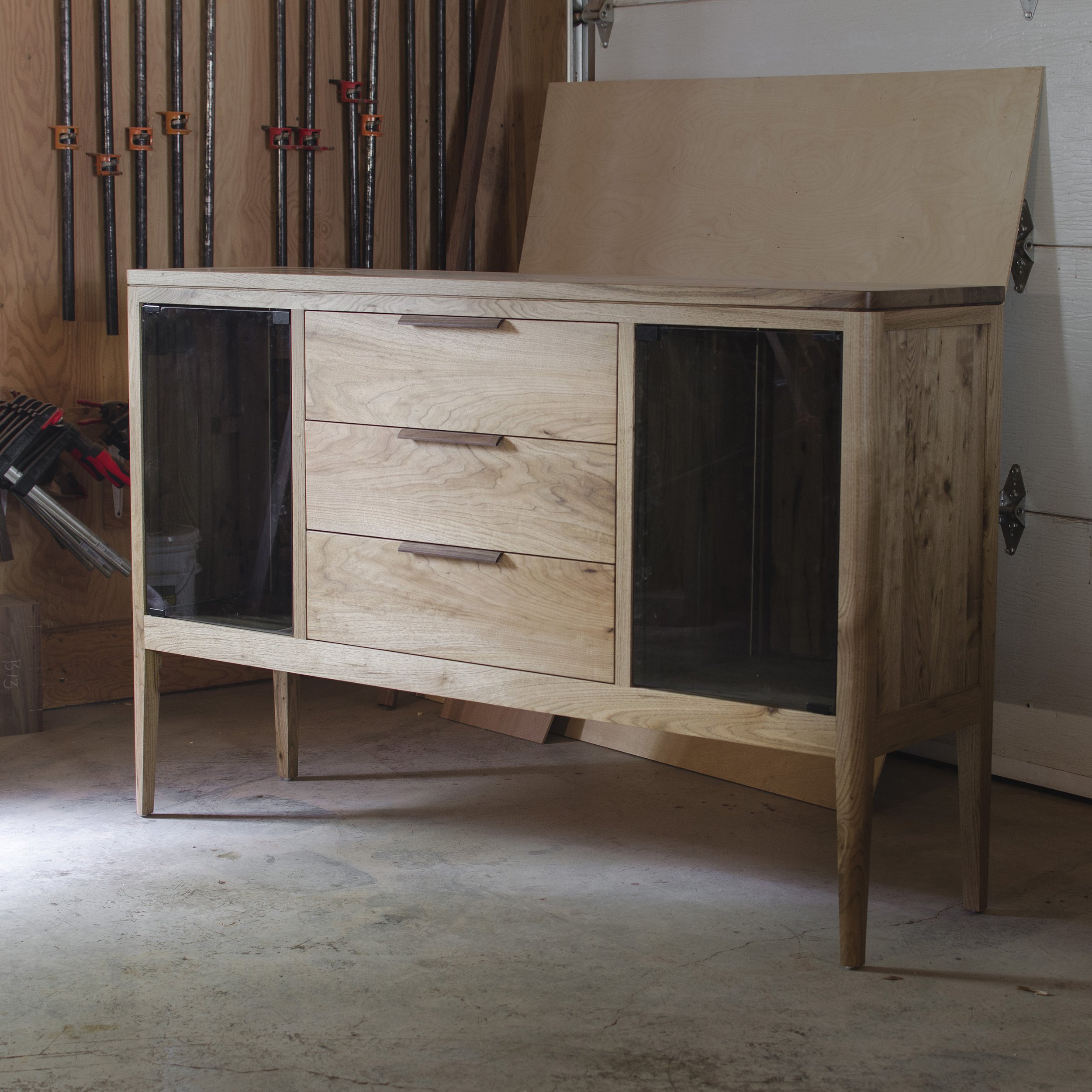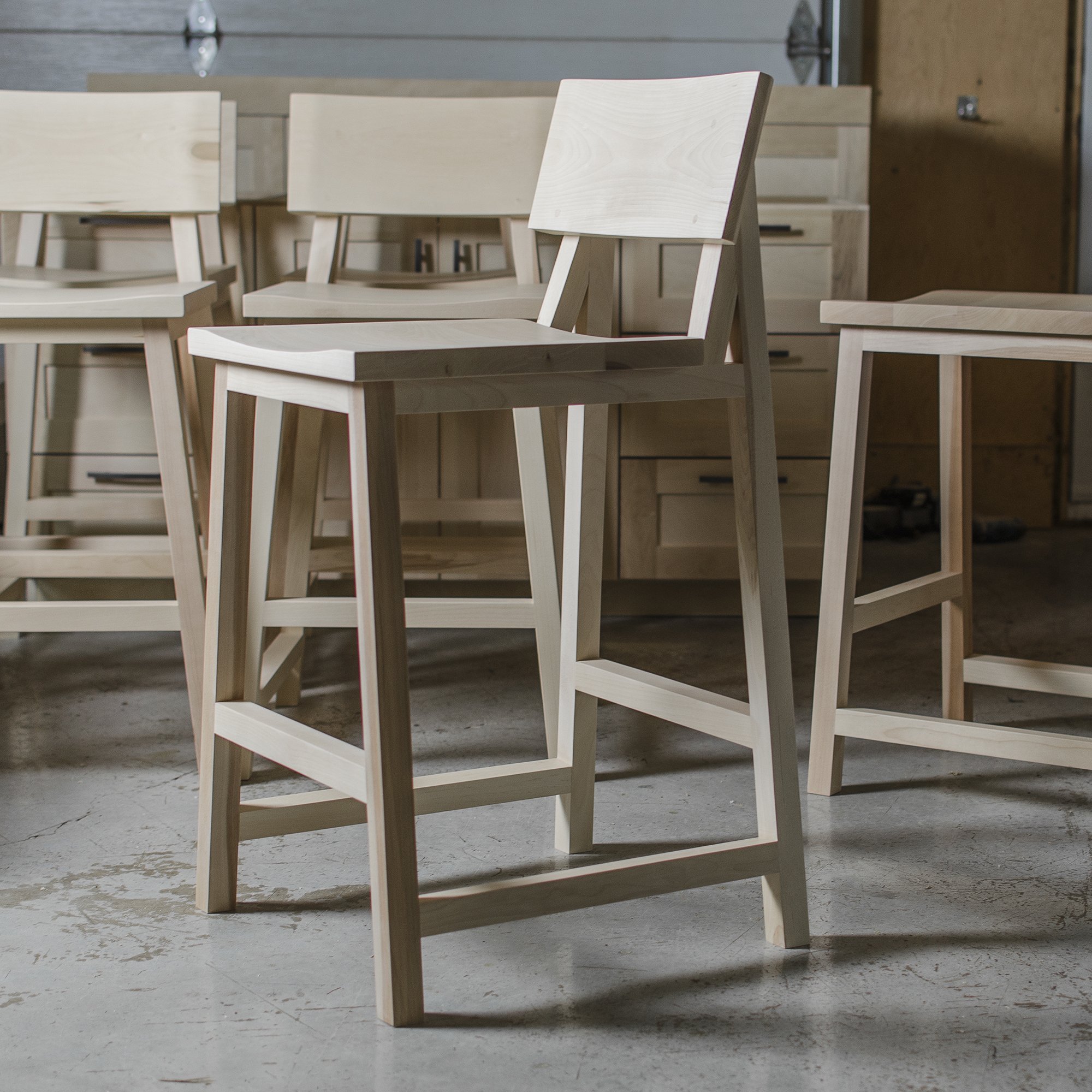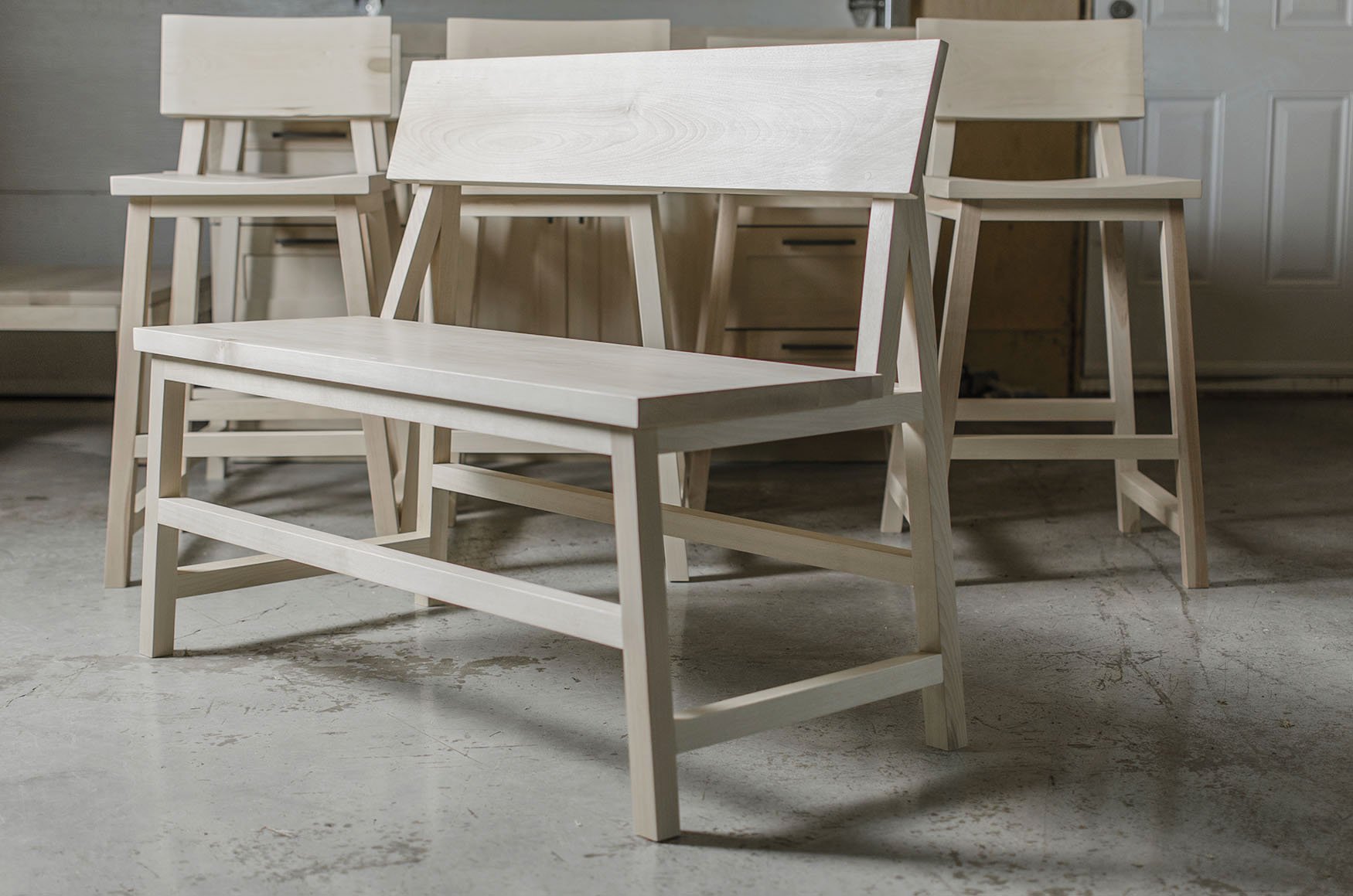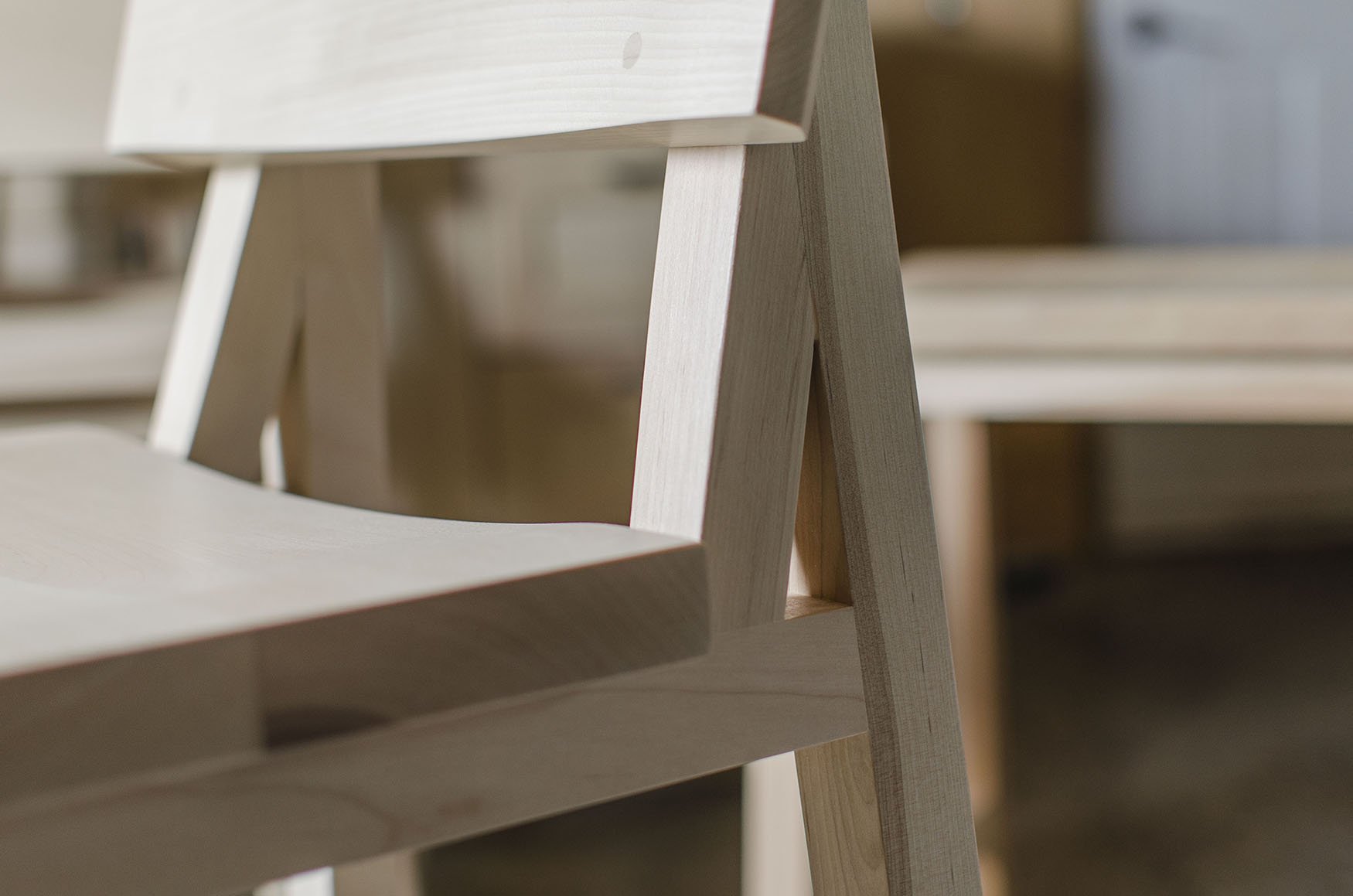
American Black Walnut
Latin name: Juglans Nigra
Origin: USA, Canada
Average weight (dry): 660 kg/m³
Sapwood color: white
Heartwood color: dark brown
Price: $$$$
This wood is prized in all areas of interior design. It is also used to make gunstocks and coffins. The nuts were once eaten by the First Nations and are now only harvested locally. Recently reforested species. Black walnut is a relatively hard wood, but it shapes well. It lends itself to a nice polish. The sapwood is wide, making it a wood with considerable shrinkage. It is available in various thicknesses and is steamed before drying to blend darker and lighter areas. It is not recommended for exterior use.
Examples of Black Walnut furniture
Black Walnut Sample
Dimensions: 89mm X 229mm X 12mm
Each plate is laser engraved with the following information: common name, Latin name, origin, density, and leaf shape.
Free delivery
Black Cherry
Latin name: Prunus serotina Ehrh.
Origin: Canada, USA
Average weight (dry): 600 kg/m³
Sapwood color: white
Heartwood color: pinkish red
Price: $$$
This species is widely used in high-end furniture and cabinetry in general. Its wood darkens over time and its color takes on character. The fruit is used to flavor kirsch and rum. Our American neighbors call it the black cherry. Naturalized in Europe. Cherry is one of the cabinetmaker's favorite woods for workshop work. The sapwood is thin and wide boards are common. It is considered a medium hard hardwood and its grain ranges from straight to wavy. Its price is relatively high, although less expensive than most exotic woods.
Exemples of Black Cherry furniture
Black Cherry Sample
Dimensions: 89mm X 229mm X 12mm
Each plate is laser engraved with the following information: common name, Latin name, origin, density, and leaf shape.
Free delivery
Discover
-

Ekko Rocking Chair
-

LIGNA Wooden Bench
-

LOIC Dining Chair
White Oak
Latin name: Quercus Alba
Origin: USA, Canada
Average weight (dry): 790 kg/m³
Sapwood color: white
Heartwood color: Pale brown
Price: $$$
White oak is an increasingly popular and prized wood. It is used more than red oak because it is considered finer. Often quarter sawn, it is heavy and very solid. It is also resistant to decay. White oak boards can be wide, making it easy to cut. Its hardness can cause difficulties during the various machining operations.
White Oak Sample
Dimensions: 89mm X 229mm X 12mm
Each plate is laser engraved with the following information: common name, Latin name, origin, density, and leaf shape.
Free delivery
Red Oak
Latin name: Quercus Rubra
Origin: USA, Canada
Average weight (dry): 790 kg/m³
Sapwood color: white
Heartwood color: Reddish-brown
Price: $$
Red oak is a very heavy, hard, coarse grained wood. Although it can be used in cabinetmaking, it is more commonly used in framing (now abandoned for resinous S-P-F) or in dry matter cooperage because it is not waterproof. Also used in woodwork and flooring. It is the most common oak and the one found farthest north in America. It can be recognized by its pointed leaves. Its characteristic smell reveals its high concentration of tannins. Its fiber is brittle and is known to dull the edge of cutting tools. Its grain is regular and its color is generally uniform. Very strong, it is the ideal wood for making a cabinetmaker's workbench.
Exemples of Red Oak furniture
Red Oak Sample
Dimensions: 89mm X 229mm X 12mm
Each plate is laser engraved with the following information: common name, Latin name, origin, density, and leaf shape.
Free delivery
White Ash
Latin name: Fraxinus americana
Origin: USA, Canada
Average weight (dry): 670 kg/m³
Sapwood color: white
Heartwood color: brown
Price: $$
Widely used in the manufacture of tool handles, hockey sticks and baseballs, ash's future as a commercially valuable wood is threatened by the emerald ash borer, an insect from Asia that can destroy ash forests in just a few years. Like the American elm, it could be threatened if we fail to contain this little critter. But it is still available. In the workshop, ash is a relatively easy wood to work with, provided you have powerful machines and sharp blades. Its flexibility and ability to bend allow it to be used in a variety of ways. It is ideal for flooring, mouldings and architectural components, and can also be used in furniture; its grain is magnificent.
Exemples of Ash furniture
White Ash Sample
Dimensions: 89mm X 229mm X 12mm
Each plate is laser engraved with the following information: common name, Latin name, origin, density, and leaf shape.
Free delivery
Hard Maple
Latin name: Acer saccharum
Origin: Canada, USA
Average weight (dry): 740 kg/m³
Sapwood color: white
Heartwood color: dark brown
Price: $$
The sugar maple is well known to Quebecers for its sweet sap harvested in the spring. It has many uses, from veneer to solid wood furniture to mouldings, stairs and floors. Its wood is very hard and golden white. The tree sometimes makes up part or all of a forest stand, especially in the northeastern part of North America. Very hard and very heavy, maple is ideal for furniture that must support a load. Two natural variations of maple are birdseye maple and curly maple, which are very popular with amateurs. It is considered difficult to work in the shop because of its hardness and very closed grain.
Hard Maple Sample
Dimensions: 89mm X 229mm X 12mm
Each plate is laser engraved with the following information: common name, Latin name, origin, density, and leaf shape.
Free delivery
Birdseye Maple
Latin name: Acer saccharum
Origin: Canada, USA
Average weight (dry): 740 kg/m³
Sapwood color: white
Heartwood color: dark brown
Price: $$$$
A natural variation of maple, birdseye maple is highly prized by connoisseurs. More commonly used for veneer.
Birdseye Maple Sample
Dimensions: 89mm X 229mm X 12mm
Each plate is laser engraved with the following information: common name, Latin name, origin, density, and leaf shape.
Free delivery
Butternut
Latin name: Juglans Cinerea
Origin: USA, Canada
Average weight (dry): 450 kg/m³
Sapwood color: white
Heartwood color: Brown-gray
Price: $$
Butternut is similar to black walnut in grain and texture, but much softer and lighter in color. It stains easily, much like white pine. It is lightweight and easy to work. Butternut is relatively hard to find and little used by cabinetmakers because it has less aesthetic value than its cousin, black walnut. Like the black walnut, the tree produces edible nuts that are oblong rather than round. It is subject to several diseases, including the fungal disease Sirococcus clavigigenti-juglandacearum.
Exemple of a Butternut cabinet
Butternut Sample
Dimensions: 89mm X 229mm X 12mm
Each plate is laser engraved with the following information: common name, Latin name, origin, density, and leaf shape.
Free delivery
Yellow Poplar
Latin name: Liriodendron Tulipifera
Origin: USA
Average weight (dry): 510 kg/m³
Sapwood color: White
Heartwood color: Greenish
Price: $
Tulipwood is considered the largest hardwood of the northeastern United States. Its wood is light and greenish in color. The trunk of this tree can produce spectacularly wide and very long planks without defects or knots. It is used as a substitute for MDF for moldings and various architectural components that require painting. It has little aesthetic value due to its color and low impact resistance. This wood is easy to work with in the workshop and on machine tools.
Yellow Poplar Sample
Dimensions: 89mm X 229mm X 12mm
Each plate is laser engraved with the following information: common name, Latin name, origin, density, and leaf shape.
Free delivery
BC Fir or Douglas Fir
Latin name: Pseudotsuga Mensiesii
Origin: USA, Canada
Average weight (dry): 450 kg/m³
Sapwood color: White
Heartwood color: Pink
Price: $$$
Douglas fir is also known as BC fir. The boards are wide and long, and the wood is considered durable. Like most conifers, its wood is soft and sap-rich. It is commonly used for structural components, exterior plywood and, less commonly, furniture. Works relatively well in the shop.
BC Fir Sample
Dimensions: 89mm X 229mm X 12mm
Each plate is laser engraved with the following information: common name, Latin name, origin, density, and leaf shape.
Free delivery
Birch
Latin name: Betula Alleghaniensis
Origin: USA, Canada
Average weight (dry): 700 kg/m³
Sapwood color: white
Heartwood color: light brown
Price: $$
In Quebec, it's called "merisier" because early French settlers found it to resemble Betula pendula. It is one of the three official emblems of Quebec, along with the snowy owl and the blue iris. Its wood is crossed by brown streaks that are connected to the heartwood and sapwood. It is quite brittle on machine tools because its fibers are long. Its grain is very slightly open, which makes it more porous than maple and allows it to absorb stains more easily.
Exemples Birch chairs and furniture
Birch Sample
Dimensions: 89mm X 229mm X 12mm
Each plate is laser engraved with the following information: common name, Latin name, origin, density, and leaf shape.
Free delivery
Beech
Latin name: Fagus Sylvatica
Origin: Europe
Average weight (dry): 720 kg/m³
Sapwood color: white
Heartwood color: light brown
Price: $$
Description to come...
Beech Sample
Dimensions: 89mm X 229mm X 12mm
Each plate is laser engraved with the following information: common name, Latin name, origin, density, and leaf shape.
Free delivery
Wenge
Latin name: Millettia laurentii
Origin: Africa
Average weight (dry): 880 kg/m³
Sapwood color: cream
Hardwood color: dark brown to black
Price: $$$$$
This tropical wood is often compared to ebony, although it is less hard and dark. Very heavy, Wenge is now widely used in exotic wood flooring and high-end furniture. Working with this wood requires certain precautions, as the dust is very irritating. Like most exotic woods, it is very expensive and must be imported from Africa. Wenge is harder and denser than maple. Surprisingly, it works very well on machines, although it is sometimes a little brittle. On the other hand, it quickly dulls cutting tools and blade edges. Grain and color vary greatly depending on how it is cut at the sawmill.
Bubinga
Latin name: Guibourtia demeusei
Origin: Equatorial Africa
Average weight (dry): 880 kg/m³
Sapwood color: white
Heartwood color: reddish
Price: $$$$
This African wood is highly prized for its unparalleled color. Its hardness makes it shock resistant and its tight grain gives it a smooth appearance. It's in the shop that you realize how hard this wood is. Its abrasive grain tends to dull cutting tools. It is used in a wide variety of furniture and architectural joinery applications. It is also used for veneer.
















